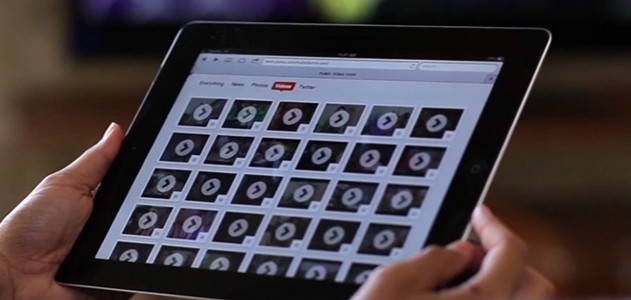The value of sports goes beyond a game, league, team, or player. Fundamentally, sports is composed of moments. And people don’t just remember a moment; they remember where they were, who they were with and even what they were eating. Sports grow and thrive on emotion. Whether it’s joy, despair, or envy, sports evoke a range of emotions in one second, one hundredth of a second, or after one decade.
When publishers think about sports in context of video, they should realize the opportunities to engage viewers and create an experience that melds the spontaneity of news, the dramatic arc of narrative film, and—with the passing of each game and each season—a trove of data.
4 S’s of Sports
For publishers, the opportunities to drive greater audience engagement with video can be grouped into four categories.
- Statistics and scores
- Social and sharing
- Spontaneity
- Stories
Statistics and Scores
Statistics and scores are how we record, measure, analyze, and track sports. Inevitably, someone or some team receives the “W” and at least one person or team receives the “L,” with the occasional tie/draw for good measure.
Video can provide context for any type of real-time statistics.
During a sporting event, while it’s common to showcase the “big” plays, non-scoring moments are just as effective to understand the ebb and flow of a game, team, or player.
- Penalties (or controversial or missed calls)
- Seemingly minor moments (e.g., a hesitation during a relay exchange, a player substitution)
- Strategy (e.g., set plays in football, volleyball)
- Performance (e.g., player splits or changes in pitching velocity)
For some, the sport itself is only a vehicle for an even greater passion that spans not just games, but seasons, jobs, cities, and friendships.
While fantasy sports games are most popular with baseball and football, it’s not uncommon to see fantasy games for soccer, basketball, auto racing, golf and more.
During the fantasy sports season and during an individual game, video can be used to augment the real-time data collected from recent games or games in progress, highlighting any type of fantasy sports “scoring,” from touchdowns, goals, strikeouts, big yardage gains, and more.
But fantasy sports participants also spend their time passively staring into a stream of real-time data. Publishers can extend this data-driven experience into a leanback video experience by aggregating, consolidating, and serializing video highlights into a video story about their fantasy team and players—a virtual “sizzle reel” of statistics and scores.
Even more compelling than synchronizing video with real-time or recent data is the potential for utilizing video to create additional context when researching team and player statistics. Publishers can create compelling experiences by enabling consumers to not just view statistics but to research via video.
Social and Sharing
Sports is commonly a social activity for participation, attendance, and viewing.
Video can play an important role beyond watching the game itself.
Whether delivered via a personal network (email or text) or a social network (Facebook or Twitter), sports lives beyond the moment, enhancing its replay value.
With social media, publishers can use video to:
- Start conversations about a specific moment (a score, an “almost” score, an exuberant fan or a frustrated coach)
- Enable viewers to start a conversation about a specific moment, “remix” their own series of moments, or create their own SportsCenter-style recap
- Create new opportunities for monetization with sponsored themes of content
Sports clubs and leagues can use video to:
- Announce changes to a stadium to entice season ticket holders or attendees (e.g., dining options, views from bleachers and suites, and previews of special game day events or giveaways)
- Leverage user-generated content to strengthen the fanbase and mobilize that audience to build long-lasting brand value, (e.g., the “best” examples of signs, cheers, “at home” fans, tailgate parties, and food)
Spontaneity
Publishers should ensure all video experiences, from desktop to mobile to Connected TVs, adapt to the viewer’s desire to discover content. Sports content has the unique characteristics of being:
- Consumed both live, time-shifted, and pre-recorded
- Viewed from the perspective of leagues, teams, players, and fans
- Inextricably linked to data
With all these facets, publishers have the opportunity to optimize discovery and promotion to increase engagement and monetization.
In the leanback mode of video consumption, publishers should let the content feel spontaneous. A viewer may start by watching a replay of Michael Phelps’ gold medal victory by the narrowest of margins: one hundredth of a second. Keying on the video’s notion of a “close finish,” the video experience could automatically program a dynamic playlist of similar content: Christian Laettner’s turnaround jumper against Kentucky, Jimmie Johnson’s 0.0002 second victory at Talladega, or the Blackhawks’ last minute rally to win the Cup.
Stories
Video can tell a story in six seconds or six hours. For publishers that focus on sports content, every video tells a story: a story about a league, a team, a player, a coach, or a fan. But sports stories, as they can encompass any number of factors, can extend beyond the more traditional set of organized leagues.
Armed with a GoPro, we can watch an angler wrestle with a 950 pound Marlin, climbers scale El Capitan, players engage in geocaching, or urban explorers scurry beneath the cobblestones of Paris.
Publishers have the unique opportunity to appeal to the emotions of the consumer. While news content is transient and derives value from both its immediacy and as a historical archive, a sports moment can be watched again and again and again with the same level of drama.
Sports enables people to engage in their passion, as a participant or as a fan, with video playing a vital role that can heighten the experience with every win, lose, or draw.








 Time to build the request. We’ll use the
Time to build the request. We’ll use the 